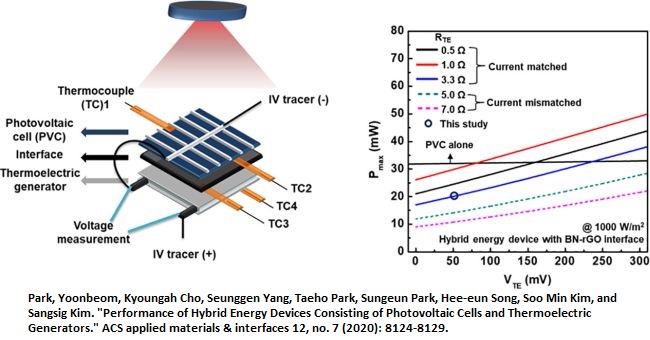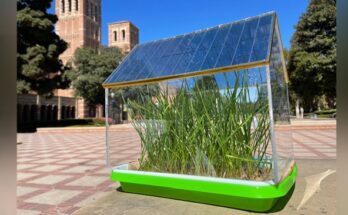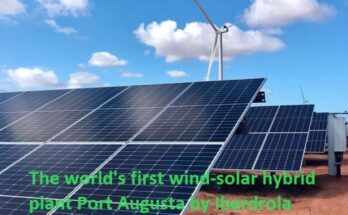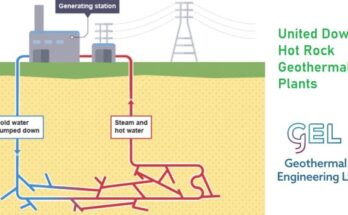Solar energy is emitted by the Sun and is a green energy source that can be renewable indefinitely. Many renewable energy sources are originated from solar energy, such as hydroelectric, tidal, wind and biomass, etc. The amount of solar energy available for us to harvest so huge that no other forms of energy source can be comparable. According to the report “Solar energy conversion” by George W. Crabtree and Nathan S. Lewis, the total energy released by the 1906 San Francisco earthquake was equivalent to a mere one second delivery of solar energy reaching the Earth; the whole estimated reusable resource of oil is equivalent to just the solar energy received by Earth within just one and a half days; and the solar energy delivered to the Earth within an hour can cover the annual energy consumption by all humans. The current technology for harvesting solar energy is mainly by PV (photovoltaic) or thermal conversion. Due to the uneven radiation of sunlight and temporal variation caused by the Earth’s rotation, photovoltaic harvesting is not a continuous supply without certain form of electricity storage. For practical application of PV, big cost is required for not only improving the efficiency of photovoltaic conversion but also adding large storage. The similar situation is found with the solar thermal conversion, which requires highly efficient thermal storage. PV panels consists of numerous single crystal silicon cells with selective bandgap properties only converts a small portion of the solar spectrum for electricity generation and a large part of the energy is unconvertable or wasted as heat. The current best commercial grade solar cells have an average efficiency around 20%. A solar thermal system can convert the whole solar spectrum into thermal energy.
It is a practical concept to integrate the PV generation and solar thermal storage within a single system. The design enables PV to directly generate electricity from sunlight and simultaneously convert unused solar energy into thermal energy and stored for electricity generation on demand, i.e. at nights when PV stops generation of electricity. Such a hybrid system has been demonstrated by L. A. Weinstein et. al. It’s called HEATS (Hybrid Electric And Thermal Solar) receiver, which consists of a PV part and a thermal absorber synergistically combined via a spectrally selective light pipe (SSLP) structure to absorb non-PV band photons as thermal energy and direct the PV-band photons to a cold PV cell on the other side as shown below.
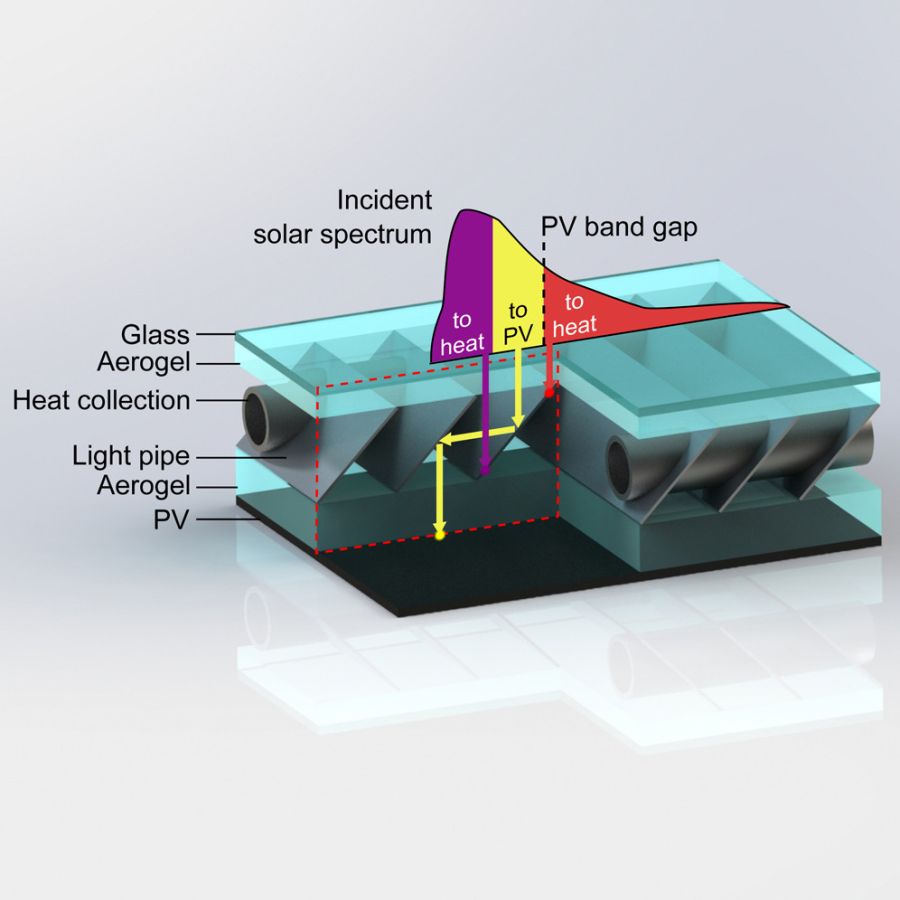
The conceptual HEATS system has predicted PV efficiency of 35.2% with high dispatchability at 44.2% of electricity from thermal energy operating at 775 K. Models of different PV subcomponents of HEATS system predicts 26.8% efficiency and 81% dispatchability with silicon PV and 28.5% efficiency and 76% dispatchability with GaAs PV.
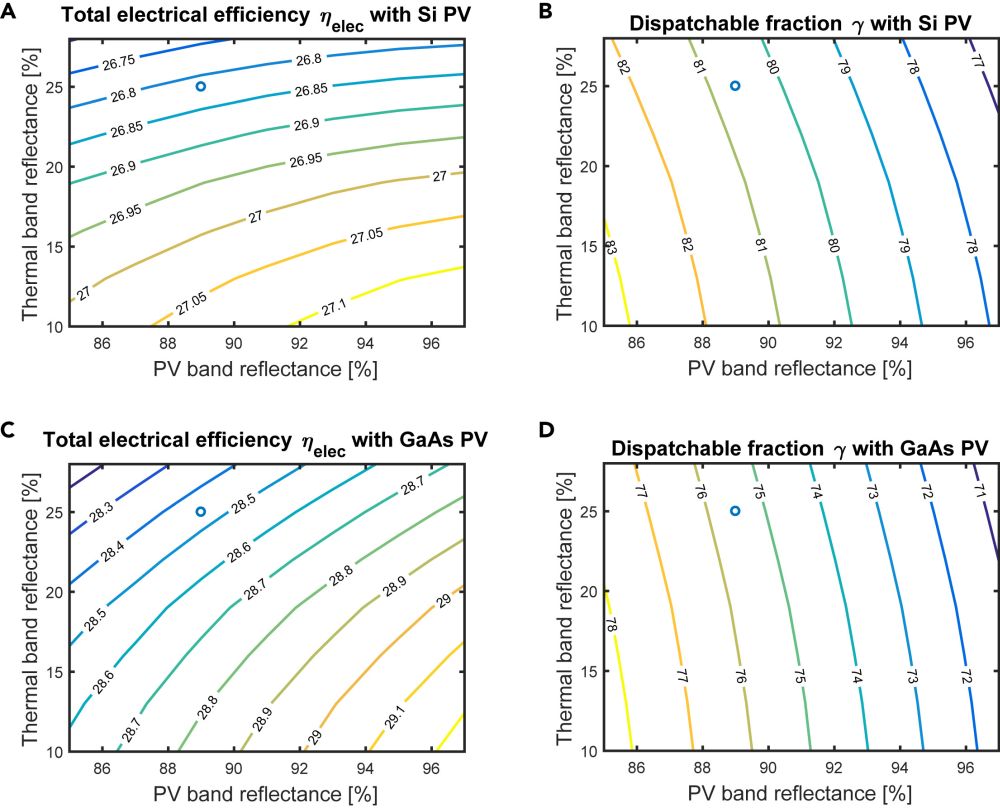
• Electrical efficiency (%) for HEATS receiver with Si PV cell.
• Dispatchability (%) for HEATS receiver with Si PV cell.
• Electric efficiency (%) for HEATS receiver with GaAs PV cell.
• Dispatchability (%) for HEATS receiver with GaAs PV cell.
Another novel concept of Photovoltaic-Thermoelectric hybrid system was proposed by A. Riahi et. al. and reviewed by Yingyao Zhang and Peng Gao. The goal of the novel design is for round-the-clock energy harvesting applications. The Photovoltaic-Thermal hybrid system consists of photovoltaic cells (PVCs) and thermoelectric generators (TEGs) as shown below. PVCs alone require long exposure in sun radiation resulting in elevated temperature and degraded PV performance. The PVC-TEG hybrid system resolves the heating problem of PVCs by absorbing the non-PV band solar energy and convert the temperature gradient to electricity.
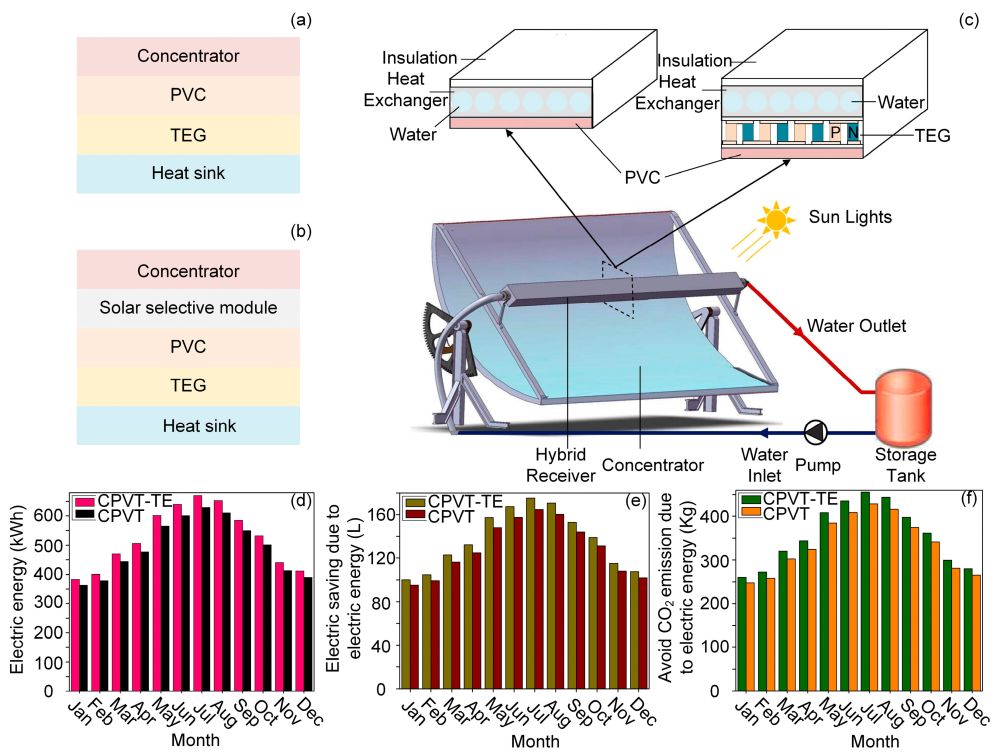
There was also proposal for other designs of PV-TE (photovoltaic-thermoelectric) hybrid systems. The following design of PV-TE hybrid system consists of a DSSC (dye-sensitized solar cell) as the top cell for high-energy photons, and a SSA (solar selective absorber) and TE (thermoelectric) generators as the bottom cell for collecting the low-energy photons. The overall conversion efficiency of this hybrid system was greater than 13%.
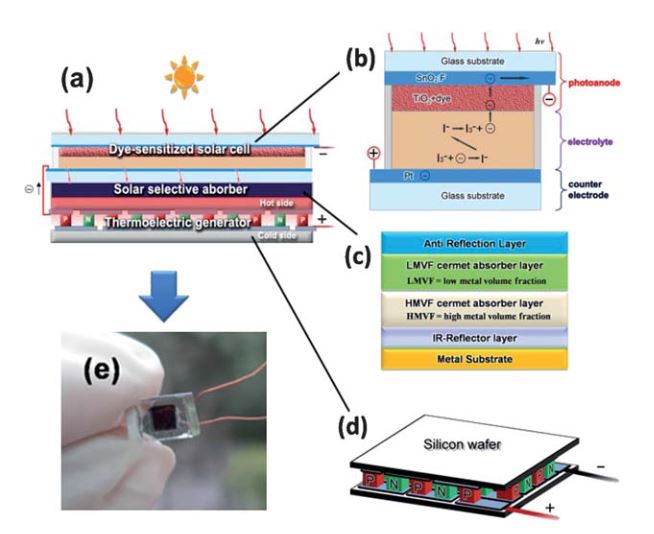
Reference
Park, Yoonbeom, Kyoungah Cho, Seunggen Yang, Taeho Park, Sungeun Park, Hee-eun Song, Soo Min Kim, and Sangsig Kim. “Performance of Hybrid Energy Devices Consisting of Photovoltaic Cells and Thermoelectric Generators.” ACS applied materials & interfaces 12, no. 7 (2020): 8124-8129.
Crabtree, George W. and Lewis, Nathan S. (2007) Solar energy conversion. Physics Today, 60 (3). pp. 37-42. ISSN 0031-9228. doi:10.1063/1.2718755. https://resolver.caltech.edu/CaltechAUTHORS:CRApt07
Weinstein, L. A., McEnaney, K., Strobach, E., Yang, S., Bhatia, B., Zhao, L., … & Chen, G. (2018). A hybrid electric and thermal solar receiver. Joule, 2(5), 962-975. https://doi.org/10.1016/j.joule.2018.02.009
https://www.cleanenergyreviews.info/blog/most-efficient-solar-panels
Zhang Y, Gao P. Hybrid Photovoltaic/Thermoelectric Systems for Round-the-Clock Energy Harvesting. Molecules. 2022; 27(21):7590. https://doi.org/10.3390/molecules27217590
Riahi, A., Ali, A. B. H., Fadhel, A., Guizani, A., & Balghouthi, M. (2020). Performance investigation of a concentrating photovoltaic thermal hybrid solar system combined with thermoelectric generators. Energy Conversion and Management, 205, 112377.
Wang, N., Han, L., He, H., Park, N. H., & Koumoto, K. (2011). A novel high-performance photovoltaic–thermoelectric hybrid device. Energy & Environmental Science, 4(9), 3676-3679.
He, Z., Yang, M., Wang, L., Bao, E., & Zhang, H. (2021). Concentrated photovoltaic thermoelectric hybrid system: an experimental and machine learning study. Engineered Science, 15, 47-56.

